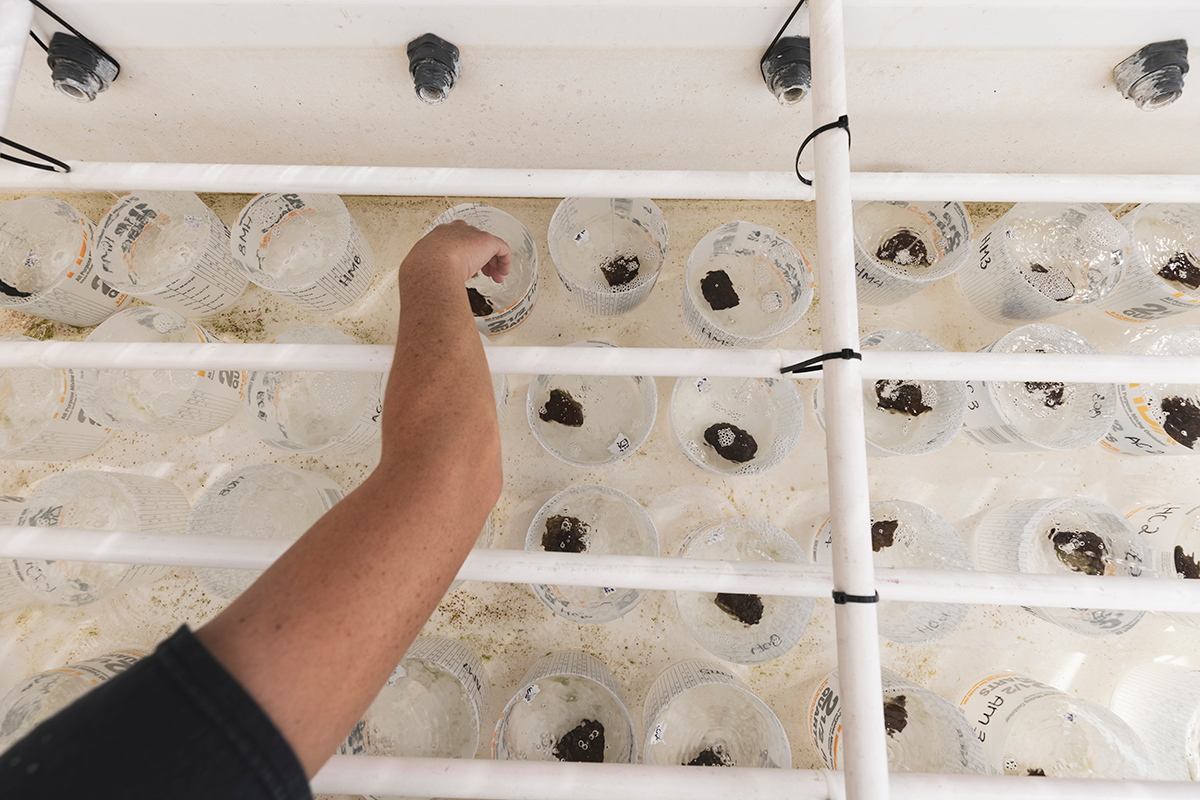Erin Hollander
Erin is a second year MMES student studying coral-macroalgal interactions across the USVI. The first part of her thesis is a temporal and spatial analysis of the Smith Lab’s Territorial Coral Reef Monitoring Program (TCRMP) data. This entails analyzing a decade of TCRMP data to characterize and model changes in coral and algal communities and abundances, identify influential biophysical factors driving coral-macroalgal physical interactions, and how does coral and algal species composition affect these interactions. Already, her analyses and models have shown coral cover significantly declining over the decade, while macroalgal cover significantly increasing. Furthermore, the rates of decline and increase significantly differ depending on the reefs’ habitat level (nearshore, offshore, mesophotic), and the coral and algal species comprising these habitats significantly differ as well.
The second part of Erin’s thesis is a manipulative study to examine the individual and combined effects of heat stress and macroalgal presence on the health of an important shallow reef-building species, Orbicella annularis. Both heat stress and macroalgal presence are increasing on USVI reefs due to environmental impacts and coral reef ecosystem degradation. It is important to understand the combined effect of these factors on a coral’s health, and the potential recovery of the coral’s health post stress disturbance. The experiment has three consecutive phases to measure coral health at times of no stress, high stress, and recovery of stress. The experimental objective is to identify which stressor is most detrimental to coral health and to understand how coral may recover from stressors, especially co-occurring stressors.
Erin’s thesis work offers a glimpse into how coral-algal relationships have evolved throughout the USVI over the past decade, how they are projected to change in the future, what factors are driving ecosystem changes, and finally, a granular look at coral health in the context of stressors in the current coral reef environment.
Photo: Dan Mele
Photo: Dan Mele


